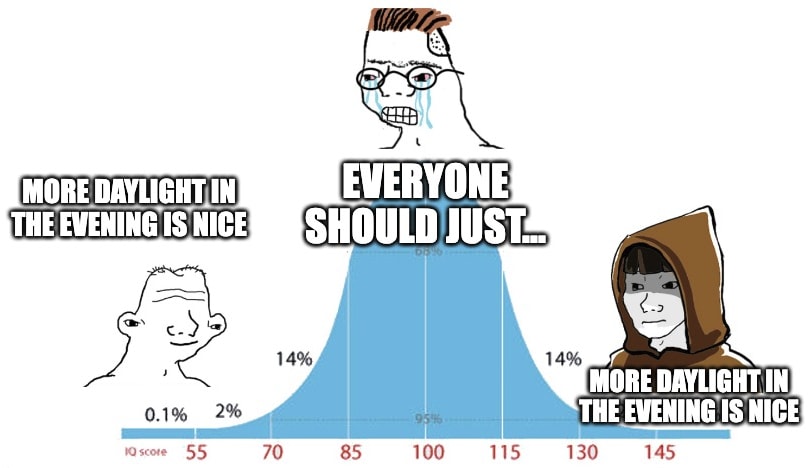Good call. I should've included more of that! Off the top of my head, I loved it because Lighthaven as a venue is cozy and delightful and because everyone involved was absolutely lovely. The participants were impressive and of course getting to hang out with other Contributing Writers (eg, Scott Aaronson, Scott Alexander, Dynomight -- filling out my top 3 favorite bloggers of all time) was pretty amazing. The organizers worked their butts off to make everything as conducive to writing as humanly possible. Plus a ton of fun activities as well -- hiking trips, open mic nights, you name it. And so many nice touches, like having an assortment of typewriters and fancy pens to try writing with. Or the Winner's Lounge with ice cream and video games that you're only allowed into once you've published for the day. And I'm only scratching the surface here. Very highly recommended!
Oh, yes, great point! It didn't even occur to me to mention that you absolutely can't say "this dessert has fewer sugar".
I have an old post on the scare quotes question: https://messymatters.com/scarequotes/
In short, I have the following cases where I claim you should not use quotes:
(0) of course no quotes for emphasis, (1) don't use quotes to indicate that you're not going to explain a word, (2) don't try to distance yourself from a phrase by putting it in quotes, (3) use italics instead of quotes for introducing a term, unless it's also a mention as opposed to a use of the term, in which case either is ok.
And that leaves the following as the remaining acceptable uses:
- Quoting someone or otherwise referring to the literal string of characters
- To indicate you don't mean something literally — like adding a parenthetical "not really"
Layers of further irony: (1) I actually started this post around 6pm, honestly believing it would take a couple hours and I could take the rest of the evening off for a change. Of course I ended up hitting publish right before midnight. (2) I fell into a quintessential Wikipedia rabbit hole along the way, uncovering a case of citogenesis (see footnote).
Ha! I'm embarrassed to have missed this reference without neuroprosthetic assistance.
https://www.gnu.org/fun/jokes/ed-msg.en.html
Maybe I should give ed a try??
Ooh, thank you! I can't get it to work though. I have it in my bookmarks but when I click it, nothing happens anywhere that I can see -- not in the textarea or elsewhere. I've tried it on lots of websites and, nothing.
PS: I tried one more time and suddenly it's working in GitHub Issues comments at least!
Does it work for you for LessWrong posts?
Good point! I'm noticing that in VS Code, the autocomplete is getting scary smart. You'll start doing some tedious edit and the AI is immediately like "so... continue for the rest of this block like this?" and you can just hit tab. For a while I would hit escape in annoyance when it did that. Why would I trust the AI not to introduce subtle errors? But (a) that doesn't seem to happen, and (b) it does a good job of highlighting the parts that will actually change so you can vet it pretty easily. It's pretty freaking magical (modulo the part where it's possibly a harbinger of dooooooom).
One more update. I'm thinking more about the "permanent DST" idea and what the logical extreme of that would be. I think it would mean that whatever time dawn is on summer solstice, that's what we call "8am", year round. No sleeping past dawn ever! (Unless you want to; we're just talking about the standard "when things happen during the day" range, aka business hours.)
Then the downside is that it's dark till like lunch time in the winter. Maybe that's ok!
I made a tool to experiment with such questions: dreeves.github.io/daylight

I made this annoying meme after thinking about how most of the anti-DST arguments involve wishful thinking about how we could get the best of all worlds if "everyone would just". Of course everyone will never just.
I think the following are valid ways to argue against DST:
- Estimate the value people get from the additional summer evening daylight. Like what would people collectively pay to hit snooze on the sun setting for an hour during the summer. Then compare that with the many costs, like sleep disruption and software bugs. And of course the lost morning daylight.
- Propose a realistic scheme by which business hours could be shifted without changing the clocks.
I think the nay-sayers have a visceral feeling that changing Time is just deeply, fundamentally stupid. Maybe even wrong in a very literal way. Time is what it is. Changing our clocks does nothing but sow confusion. Can everyone not just do what they want to do when they want to do it, regardless of what numbers are displayed on clocks? I think people really can't. We are social creatures and those numbers are critical infrastructure for our ability to coordinate.
Ooh, nice! I had a very compressed version of that as tip #4 in my list of tips from Inkhaven and actually paid out a $15 honey money prize for it (long story).
Actually that's a small subset of your advice. Probably the more important part is what your title refers to. The thing where you tell someone, "I can't figure out how to say XYZ" and they reply "what you just said works". Scott Aaronson said that was his secret to adding value as a contributing writer at Inkhaven. He'd read the draft, say "I don't get it", the author would explain, and Scott would say "great, write that!".